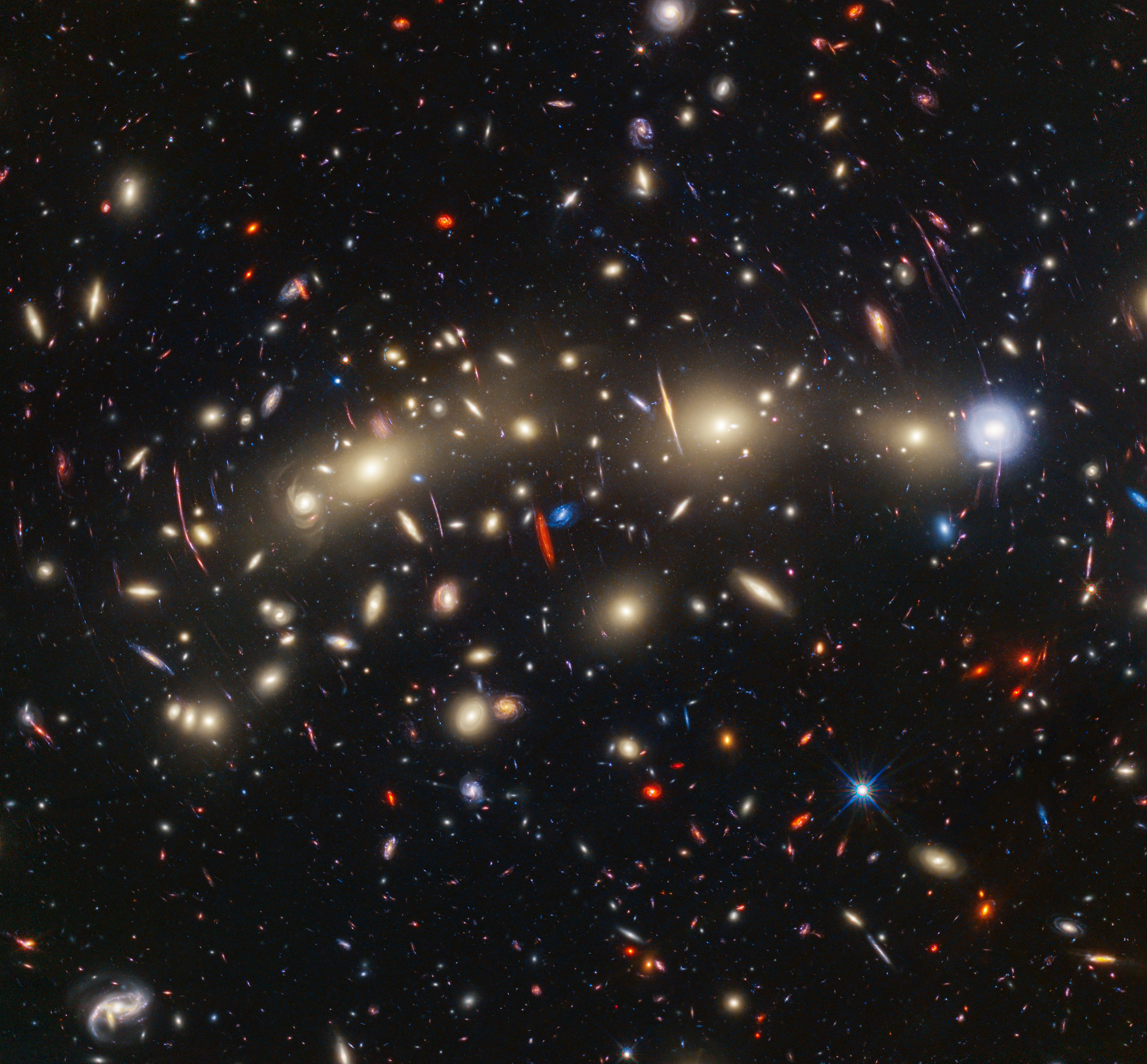Galaxy Clusters (SPHEREx + Kinematics)
posted on March 7, 2024
Galaxy Clusters (SPHEREx + Kinematics)
 Image credit: NASA, ESA, CSA, STScI, Jose M. Diego (IFCA), Jordan C. J. D’Silva (UWA), Anton M. Koekemoer (STScI), Jake Summers (ASU), Rogier Windhorst (ASU), Haojing Yan (University of Missouri)
Image credit: NASA, ESA, CSA, STScI, Jose M. Diego (IFCA), Jordan C. J. D’Silva (UWA), Anton M. Koekemoer (STScI), Jake Summers (ASU), Rogier Windhorst (ASU), Haojing Yan (University of Missouri)
Galaxy clusters, the largest gravitationally bound structures in the Universe, are key to understanding cosmic evolution. These “cosmic metropolises” are not just collections of galaxies; they are laboratories for studying the composition of the Universe, including the mysterious dark matter and dark energy that elude direct detection.
We focus on the dynamics within these clusters, analyzing the kinematics of the galaxies to determine the mass of the clusters. We use velocity measurements from telescopes such as Gemini and Hectospec/MMT, together with data from X-ray observations and the Sunyaev-Zeldovich effect in the cosmic microwave background.
The upcoming SPHEREx mission will revolutionize this field by mapping the sky in the near-infrared, providing redshifts for about 301 million galaxies. This massive dataset will include about 100,000 galaxies within clusters, allowing unparalleled studies of dark matter, dark energy, and galaxy evolution in the most crowded regions of the Universe. We are planning the cluster analyses using the SPHEREx data to prepare and optimize its unique data set for studies of cluster cosmology and galaxy evolution.